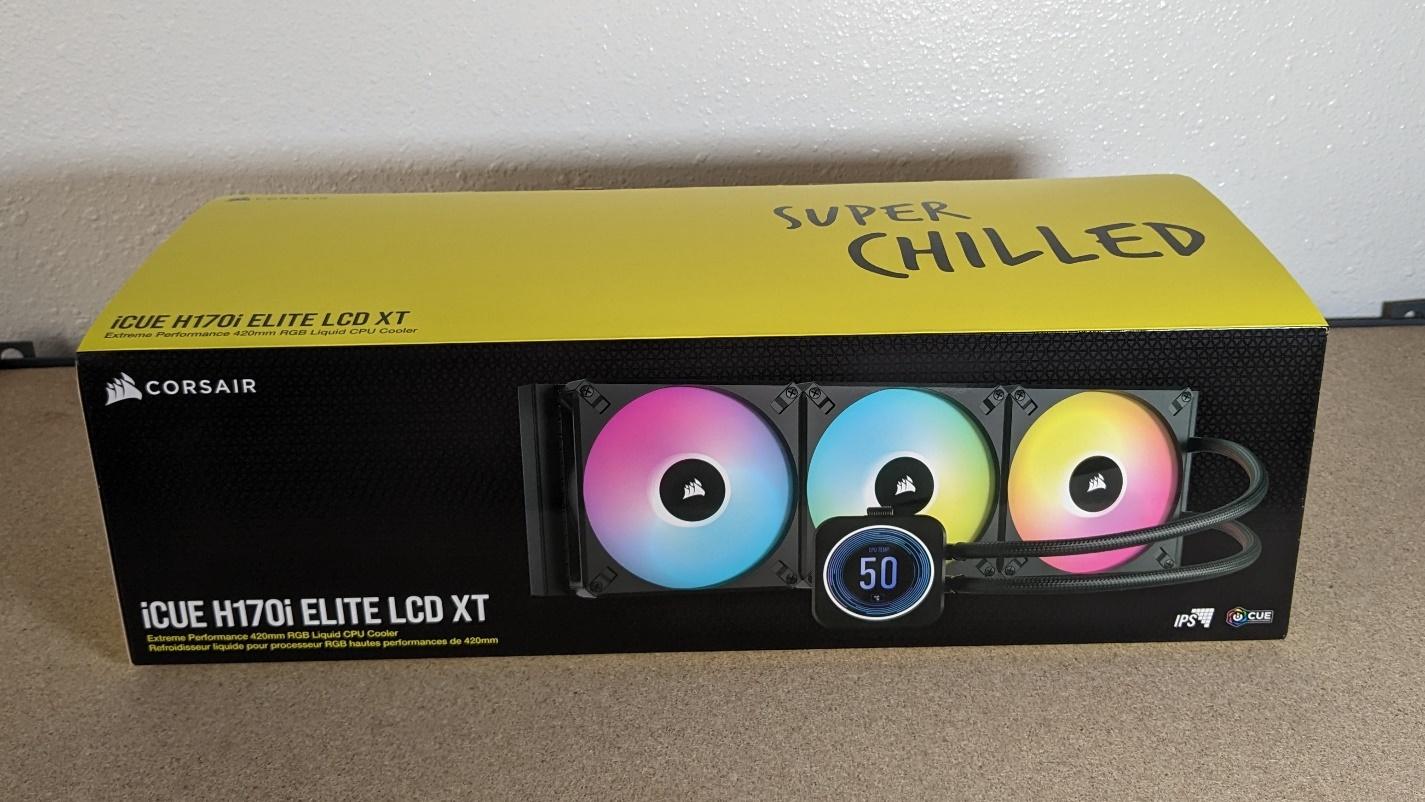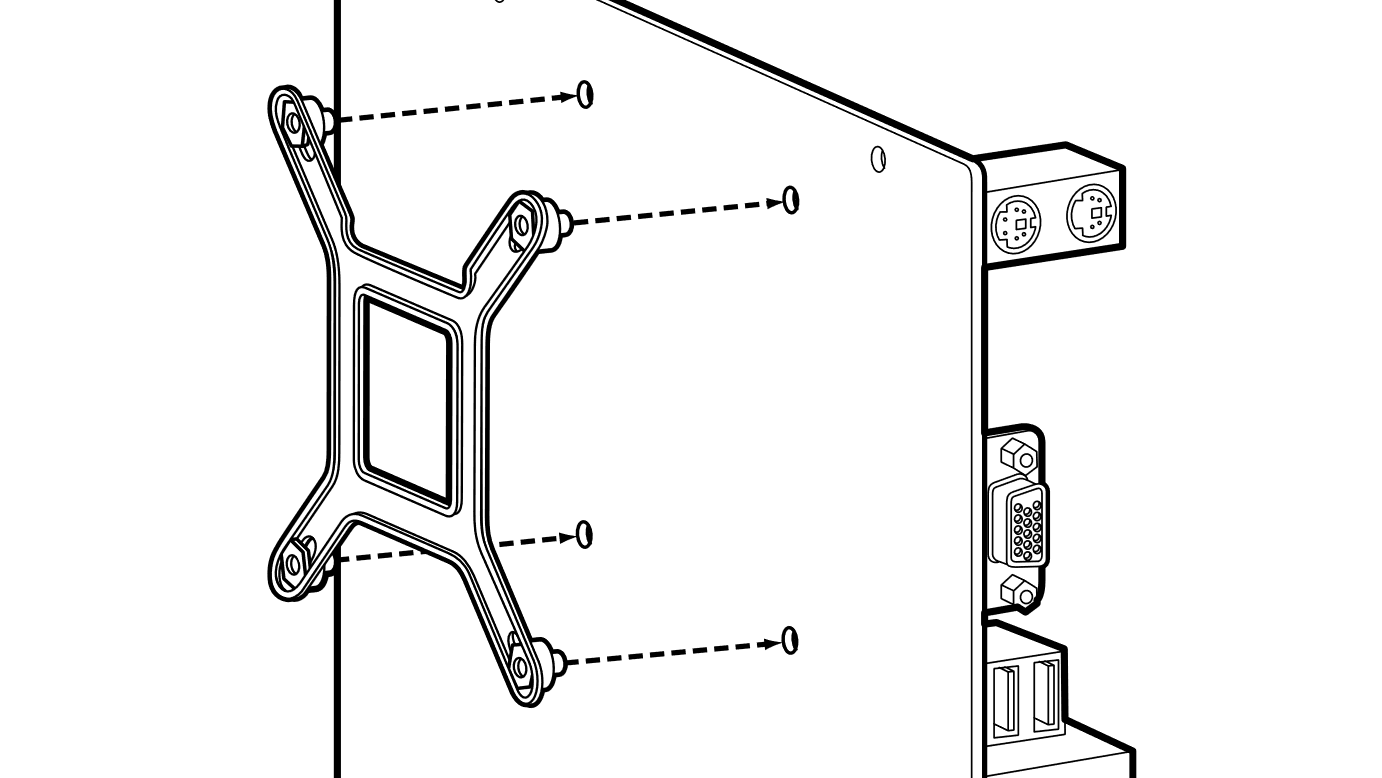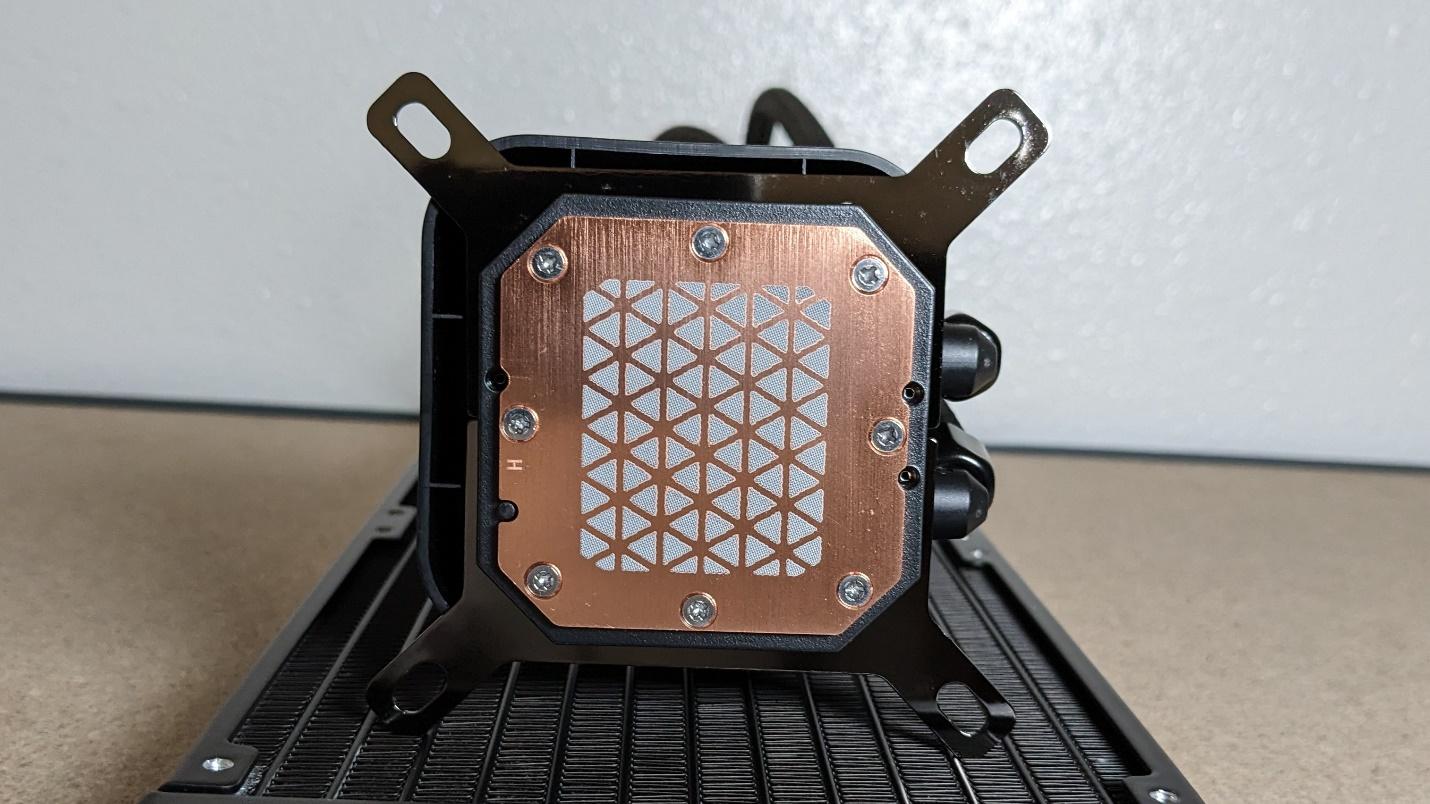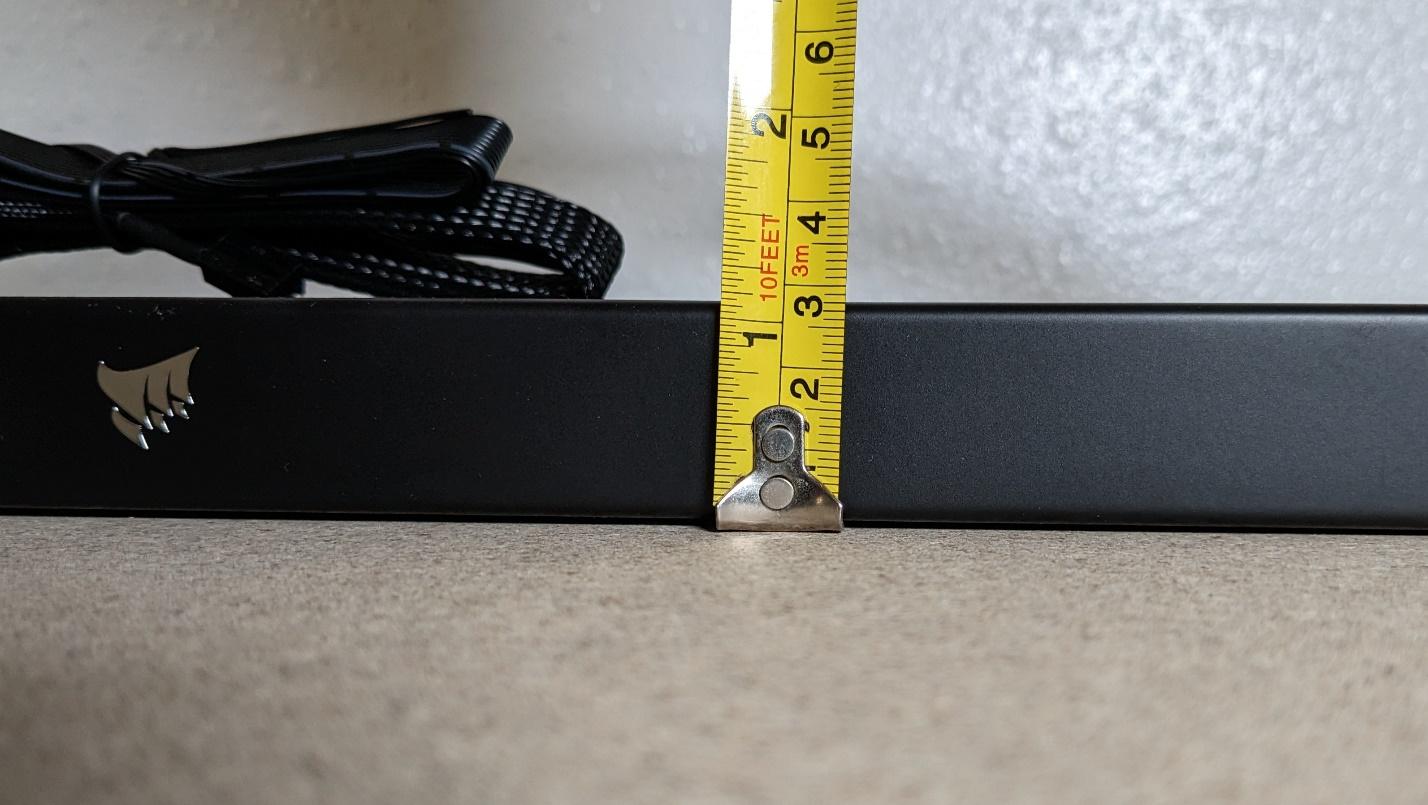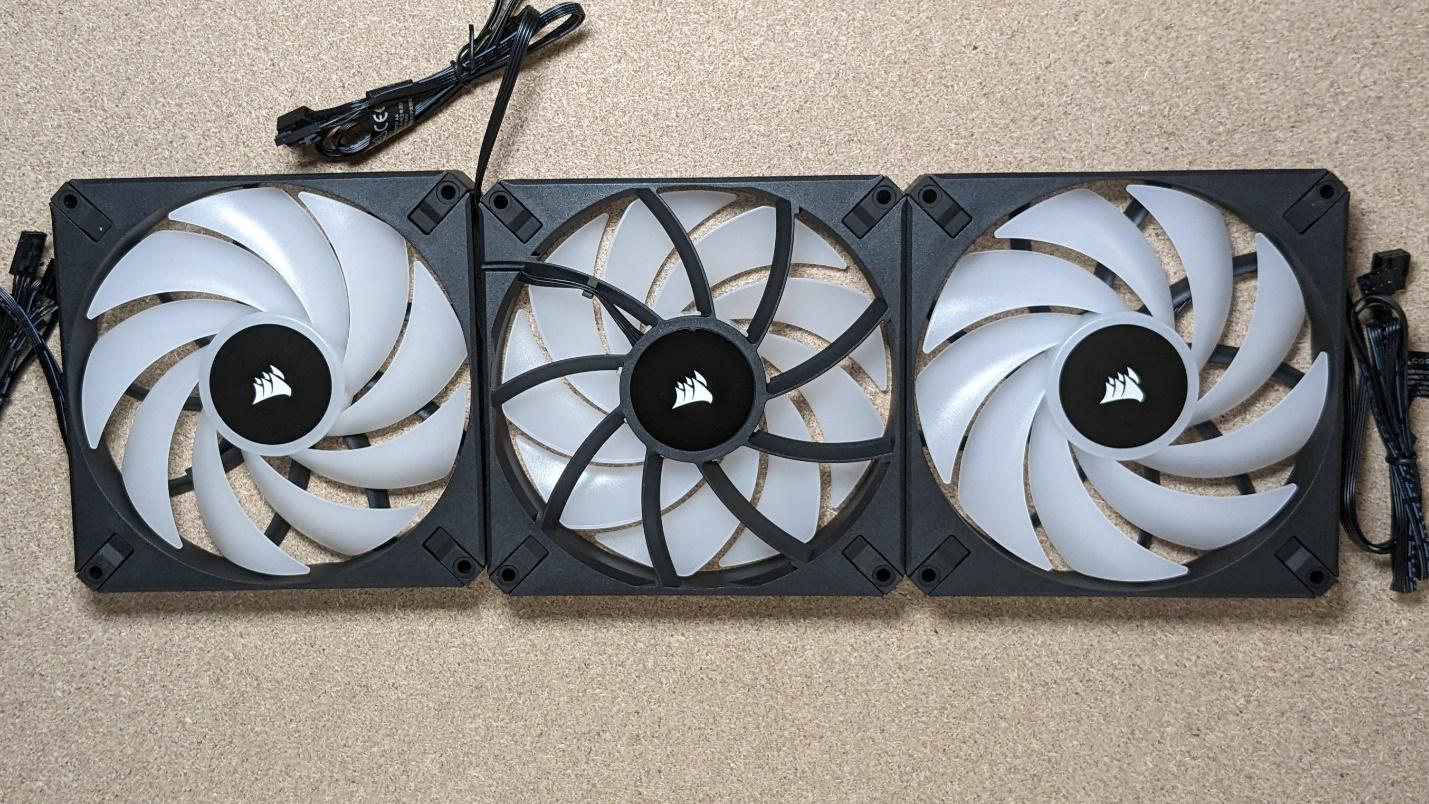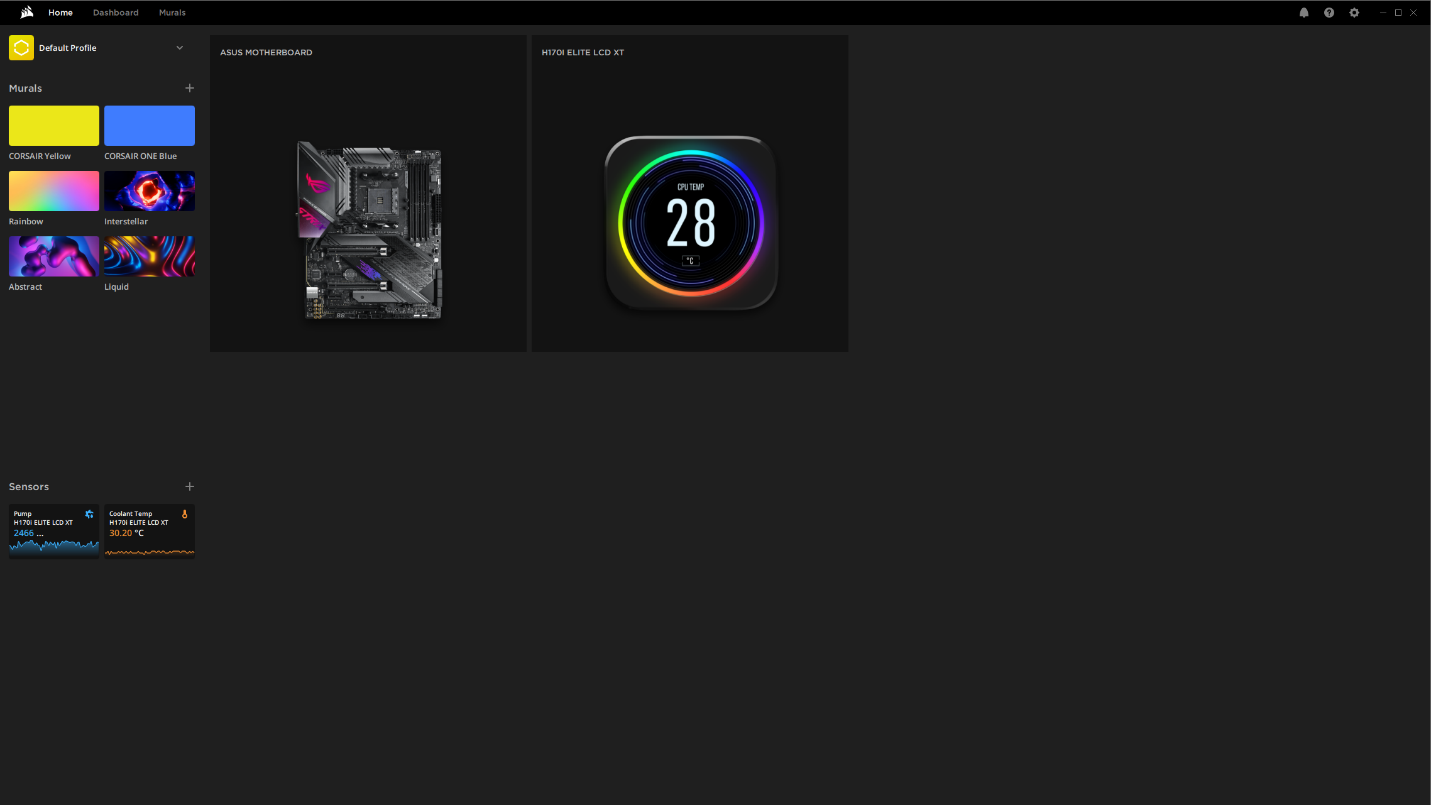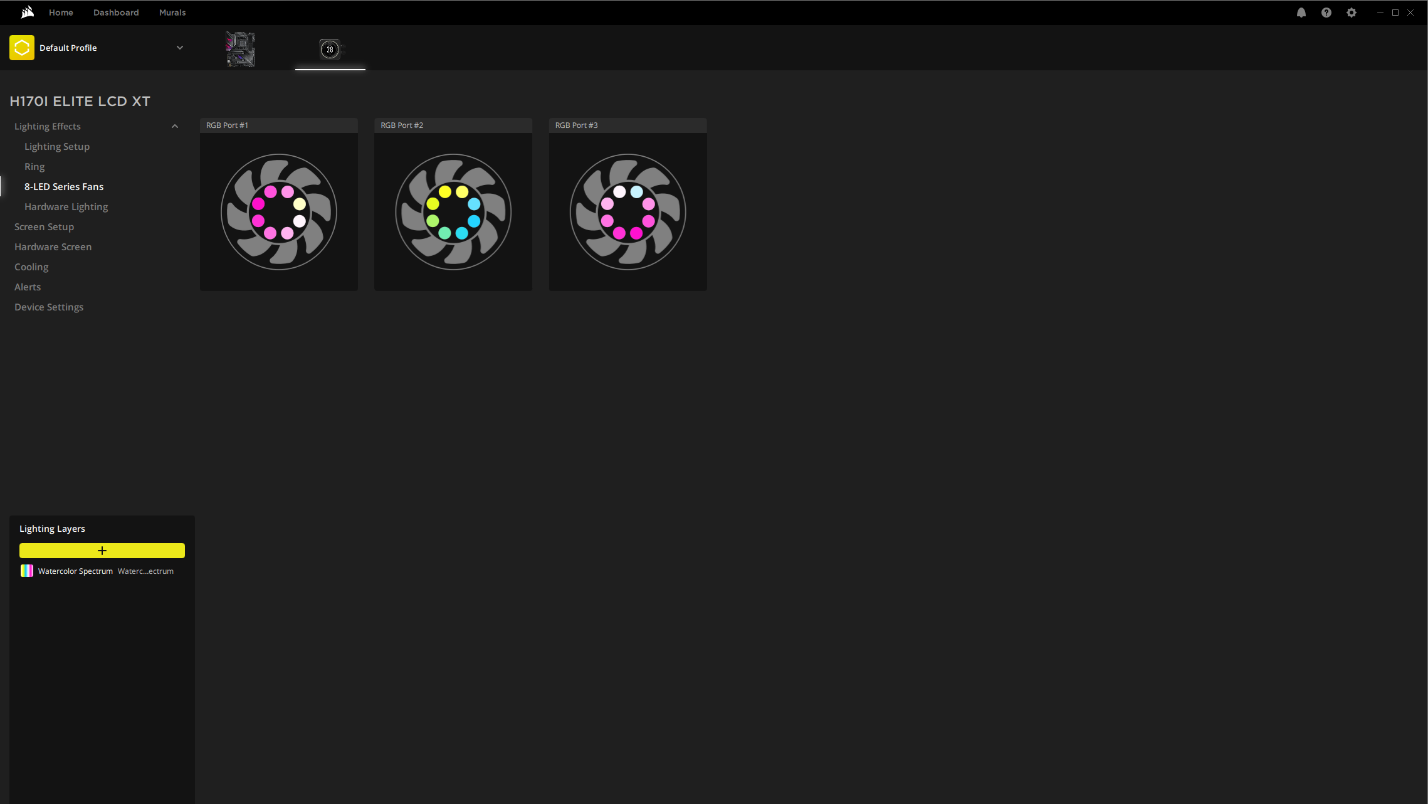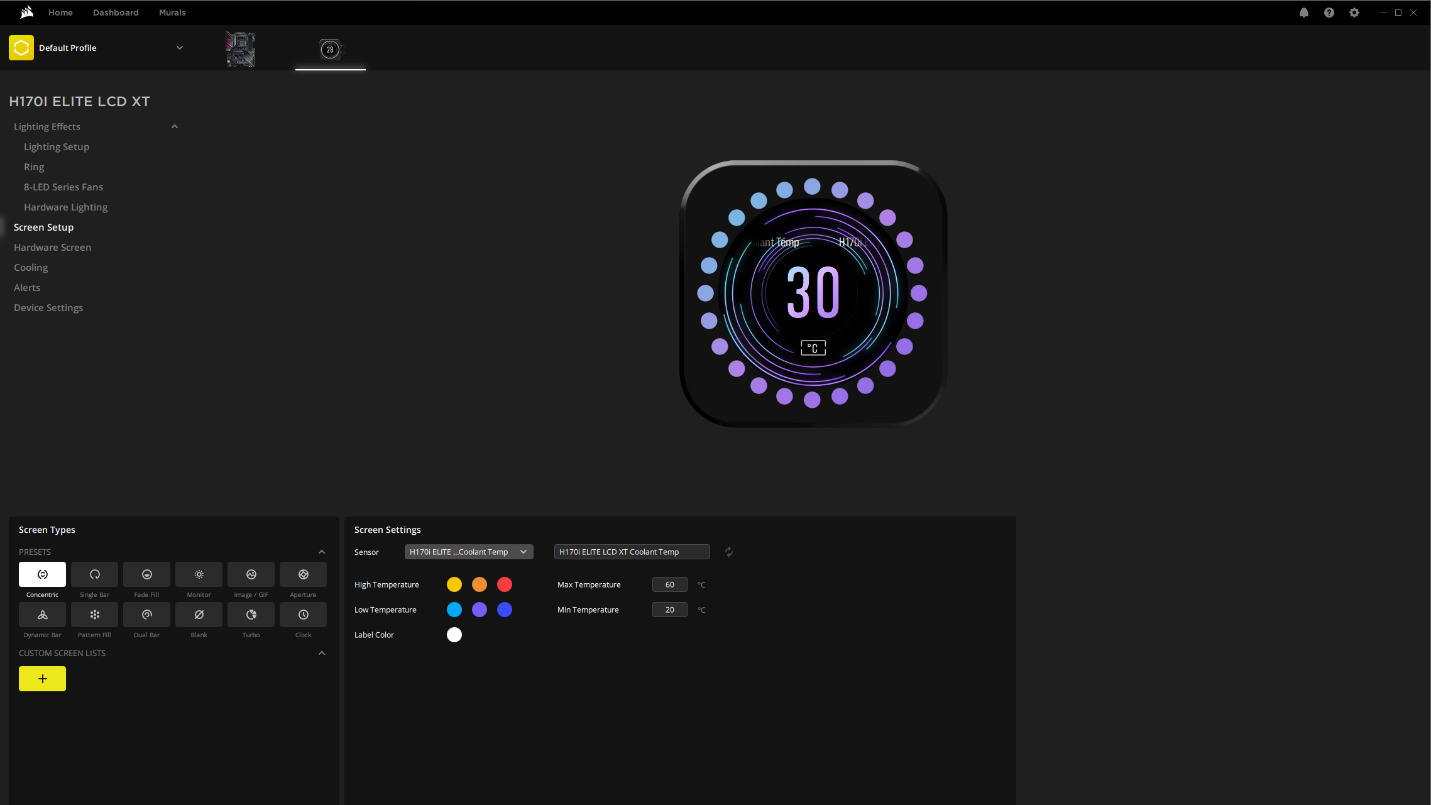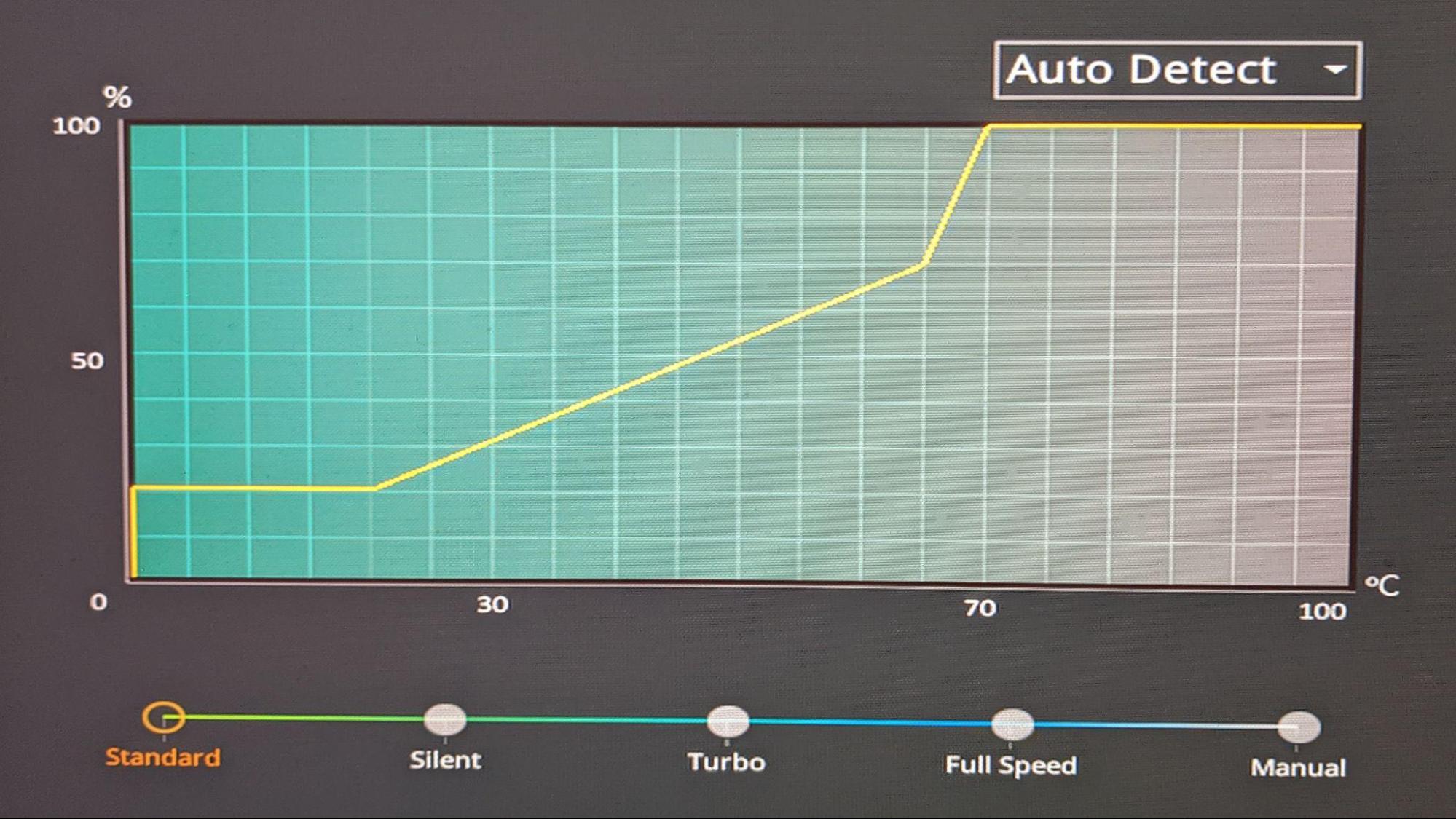Tom's Hardware Verdict
Corsair’s iCUE H170i Elite LCD XT uses a 420 mm radiator to deliver the best cooling we’ve seen yet. And its IPS display is attractive and useful. Just be ready to pay up (and maybe buy a bigger case) if you crave this level of powerful and attractive cooling.
Pros
- +
Strongest cooler we’ve tested with Intel’s i9-13900K, handling up to 325W
- +
Comprehensive software suite
- +
2.1-inch High-quality IPS display
- +
Fan curves tied to coolant temperature, rather than CPU temperature
- +
Won’t get in the way of tall RAM
Cons
- -
420mm radiator severely limits case support
- -
$309.99
Why you can trust Tom's Hardware
While the company started out selling L2 cache modules for OEMs, today Corsair sells a wide variety of components and peripherals, like the Corsair 5000X case and CX750M Power Supply. Cooling has also been a staple of the company's lineup for a long time; most recently we tested Corsair’s iCUE H100i Elite 240mm with Intel’s i9-12900K.
But with Raptor Lake raising the bar of cooling difficulty, Corsair has sent us its strongest AIO yet – the 420mm iCUE H170i Elite LCD XT. Can it tame Intel’s 13900K and earn a spot on our best AIO coolers list? It definitely has a size advantage, as well as a high $309.99 MSRP, but we’ll have to put it through testing to find out how it performs. First, here are the specifications from Corsair.
Cooler Specifications
| Cooler | Corsair iCUE H170i Elite LCD XT |
|---|---|
| MSRP | $309.99 USD |
| Radiator Dimensions | 457 x 140 x 27 mm |
| Radiator Material | Aluminum |
| Pump Speed | Up to 2700RPM |
| Socket Compatibility | Intel: LGA 1700, 1200, 1150, 1151, 1155, 1156, 1366, 2011, 2066 |
| AMD: AM5, AM4, AM3, sTRX4, sTR4 | |
| Base | Copper |
| Max TDP (Our Testing) | ~325W |
| Warranty | 5 years |
Packing and Included Contents
420mm is far from small, and as such the Corsair iCUE H170i Elite LCD XT arrives in a package that’s almost as long as my arm.
Included with the package are the following:
- 420 mm Radiator
- CPU block with 2.1-inch IPS Display
- 3x 140 mm fans
- Mounts for all modern CPU sockets (including AM5 & LGA1700)
- Safety and warranty information
- Hardware lighting and PWM hub
- Pre-applied thermal paste
Installation
The installation of Corsair’s AIO is fairly simple.
1. Secure the backplate.
2. Secure the standoffs.
Get Tom's Hardware's best news and in-depth reviews, straight to your inbox.
3. Secure the radiator and fans to the top of the case.
4. Secure the CPU block to the standoffs.
5. Secure the fan control hub, then connect the CPU block and fans to it.
Features of Corsair iCUE H170i Elite LCD XT
2.1-inch 480x480 IPS Display
On top of the CPU block is a vivid 480x480 IPS display that can show the sensor readings of your choice with a variety of display themes, or be loaded with a custom background or animated GIF of your choosing.
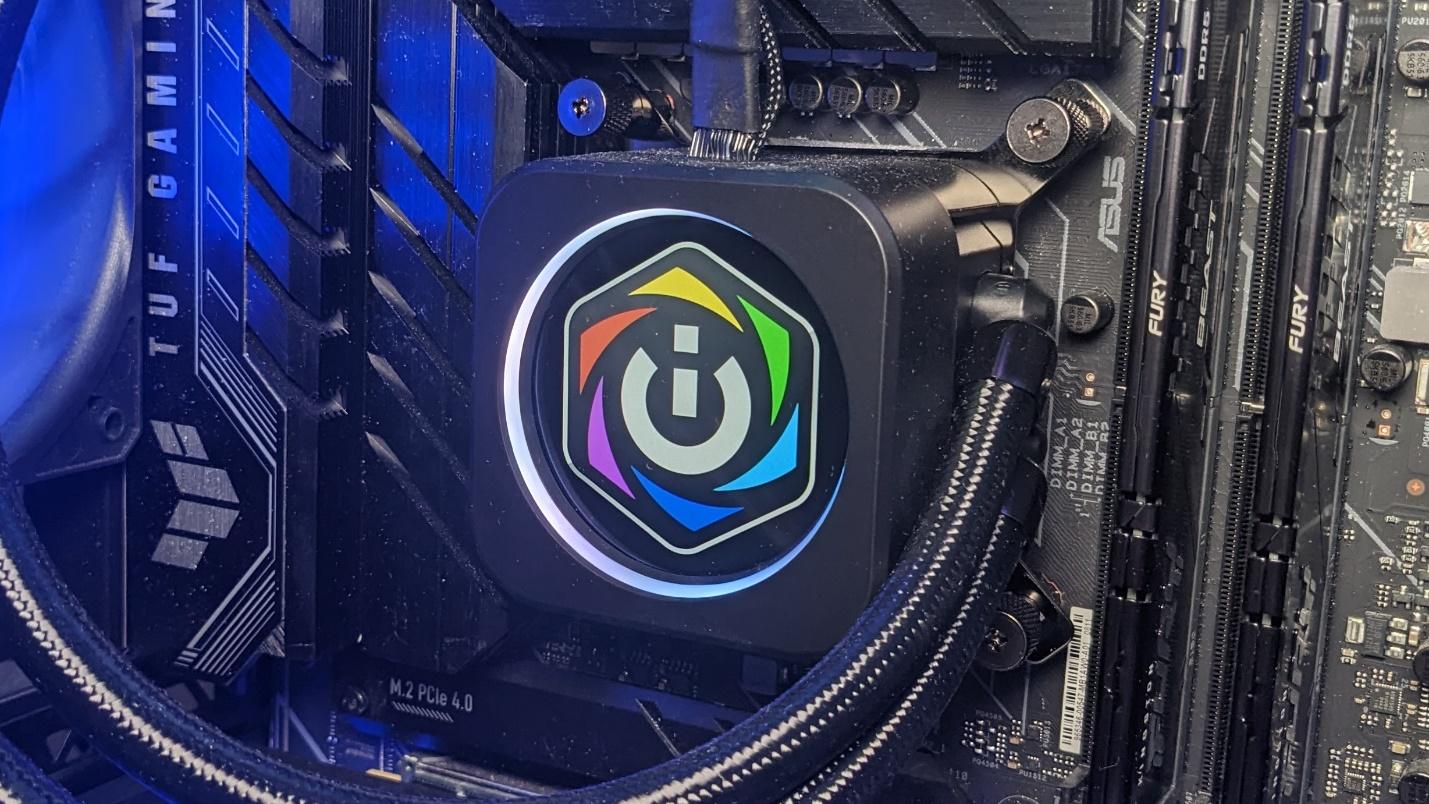

Full Copper CPU plate
The CPU contact plate on Corsair’s iCUE H170i Elite LCD XT is made of copper and comes with thermal paste pre-installed.
Hardware RGB & PWM Hub
The H170i Elite comes with a hardware RGB & PWM hub, capable of supporting up to three additional extra fans, not including those that come with the cooler (6 devices supported in total).
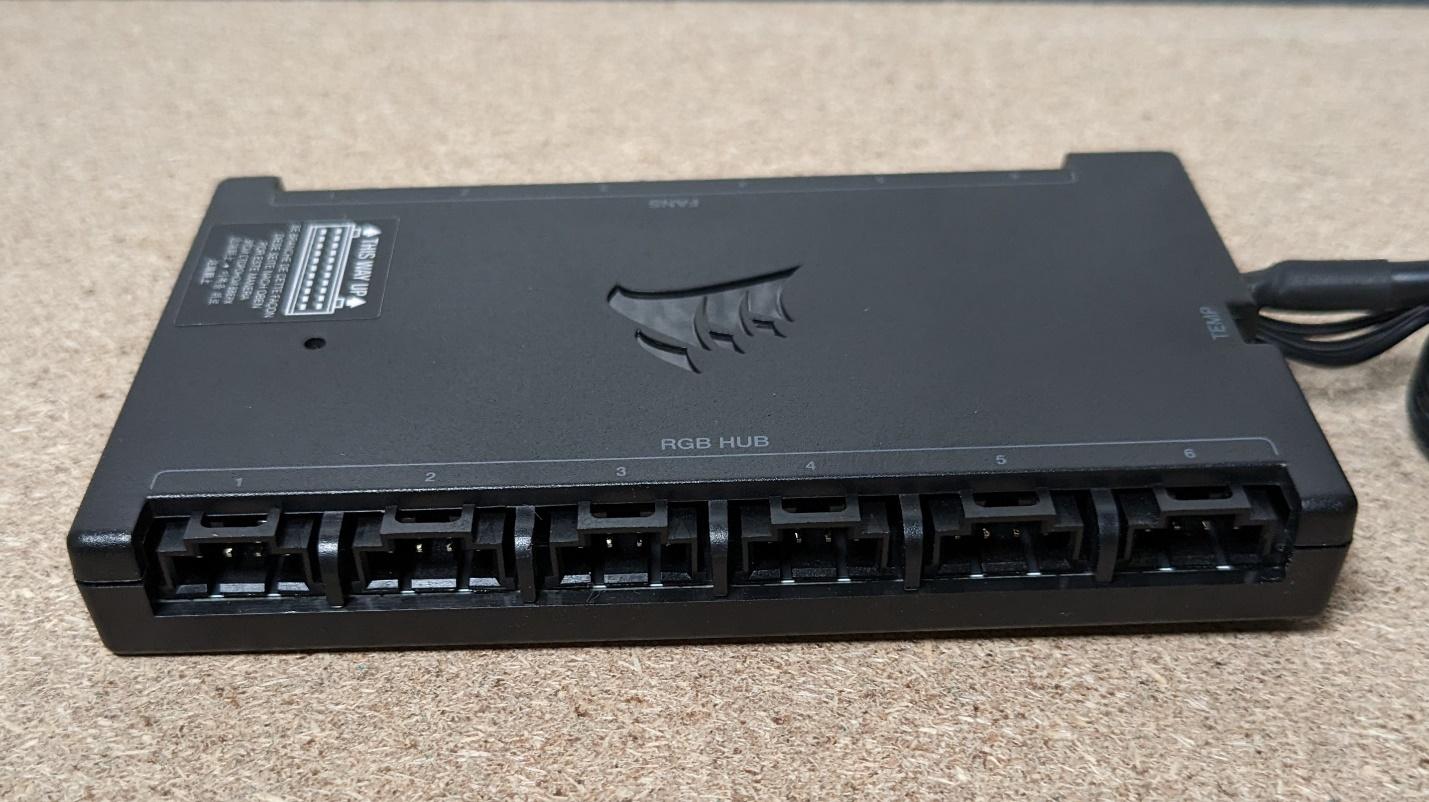

27mm thick 420 mm radiator
The S36 Prisma features a 420 mm radiator that’s 27 mm (1.06 inches) thick. This isn’t the thickest (or thinnest) radiator we’ve seen, but it should be compatible with any case that supports a 420mm AIO.
3x AF RGB Elite PWM 140mm fans
There’s more to a cooler than just the heatsink or radiator. The bundled fans have a significant impact on cooling and noise levels. Included with the iCUE H170i Elite LCD XT are three 140mm AF RGB Elite fans. The versions of these fans included with the cooler are slightly stronger than the standard AF RGB Elite fans, with a maximum speed of 1700RPM vs 1600 on the standard models. Corsair advertises powerful airflow, up to 89 CFM of peak airflow, a low-noise rating (10-33.8 dBA), and durability thanks to fluid dynamic bearings. Here are the fan’s specs:
| Model | AF RGB Elite PWM |
| Dimensions | 140 x 140 x 25 mm |
| Fan Speed | 500 - 1,700 RPM |
| Air Flow | Up to 89 CFM |
| Air Pressure | 2.00 mm H2O |
| Bearing Type | Fluid Dynamic Bearing |
| Lighting | RGB |
Fan Curve tied to AIO Coolant temperature, rather than CPU temperature.
The pump and fan curves of the iCUE H170i Elite LCD XT are based on the temperature of the CPU coolant instead of the CPU. This has advantages and drawbacks, but many will appreciate how it reduces noise levels in common loads and eliminates bursty fan behavior.
The disadvantage to this method is that semi-intensive, but sustained, workloads will cause the cooler to run just as loudly as it would in a fully unrestricted workload. The fans will also spin at higher speeds for a moderate period of time once the workload has completed, rather than instantly returning to low speeds. This happens because it takes a few moments to bring the AIO’s coolant temperatures down after a sustained workload.
Comprehensive Software Suite
Corsair’s iCUE software provides comprehensive customization for its coolers, components and peripherals. I was pleasantly surprised to see my motherboard’s RGB options detected by the software, allowing easy control over all system RGB functions. This is due to cooperation between the two companies that was first announced in 2020. Other motherboard brands are not currently supported by iCue.
The software allows for in-depth controls of the cooler’s LEDs. You can change the settings for each individual LED on the included AF RGB Elite fans.
You are also able to change what is shown on the CPU block’s small screen via the software. You can set it to show the time, coolant temperature, or another sensor of your choice. The background can be changed from a variety of customizable presets, or you can also upload an image or GIF file.
Testing Methodology
While it was fairly easy with previous CPU generations for coolers to keep the flagship i9 processor well under TJ max (the maximum temperature a CPU can sustain without throttling) in tough workloads, this is no longer realistically possible on current generation CPUs (and the 13900K specifically) without extreme cooling (or enabling power limits).
While in the past a CPU hitting its peak temperature was cause for concern, enthusiasts are going to have to learn to accept high temperatures as “normal” while running demanding workloads with Raptor Lake and Ryzen 7000 CPUs. Modern AMD and Intel CPUs are designed to run fairly hot without any problems – up to 95 degrees Celsius and for AMD Ryzen 7000 CPUs and up to 100 C for Intel’s Core i9-13900K. Similar behavior has been standard in laptops for years due to cooling limitations in tight spaces.
Furthermore, Intel’s Core i9-13900K supports Adaptive Boost Technology (ABT) which allows Core i9 processors to dynamically boost to higher all-core frequencies based on available thermal headroom and electrical conditions. This allows multi-core loads to operate at up to 5.5 GHz if the necessary amount of thermal dissipation is there. This feature works in a way that actively seeks high temperatures: If the chip sees that it is running underneath the 100-degree C threshold, it will increase its performance and power consumption until it reaches the safe 100 C limit, thus maintaining higher clocks (and providing better performance) for longer periods.
The increased cooling challenges posed by Raptor Lake mean that we’ve had to change some of the ways we test coolers. Some coolers were able to pass Cinebench R23 multicore testing with Intel’s 12th Gen i9-12900K when power limits were removed (although only the strongest models were able to pass that test). Most liquid coolers and all air coolers I’ve tested “failed” that test because the CPU reached TJ max in this scenario.
With Raptor Lake’s 13900K, not a single cooler tested has been able to keep the CPU under TJ max in this test – because as we pointed out, the chip is designed to dial up performance and power until it reaches that thermal result. For these intense loads, we’ll test performance by comparing the total amount of watts cooled and noise levels.
I’ll be testing Intel’s i9-13900K CPU using Asus’ TUF Gaming Z690 Gaming Plus WIFI motherboard and Cooler Master’s HAF 700 Berserker PC case, with case fans limited to 35% speeds. The motherboard’s default fan curve is used for the CPU Cooler’s fans.
In addition to testing Cinebench without power limits enforced, we’ll also be showing results when the CPU’s power consumption is limited to a more reasonable 200W. We’ll also show results at 125W for those who prefer whisper-quiet cooling, at the cost of some performance. For both of these results, we’ll show traditional delta over ambient temperature results.
We’ll provide noise level measurements recorded using a PSPL25 Sound Meter for all three power levels tested to compare how much noise each cooler makes in different scenarios. We expect most coolers to run quietly at 125W.
LGA1700 Socket Bending
Note there are many factors other than the CPU cooler that can influence your cooling performance, including the case you use and the fans installed in it. A system's motherboard can also influence this, especially if it suffers from bending, which results in poor cooler contact with the CPU.
In order to prevent bending from impacting our cooling results, we’ve installed Thermalright’s LGA 1700 contact frame into our testing rig. If your motherboard is affected by bending, your thermal results will be worse than those shown below. Not all motherboards are affected equally by this issue. I tested Raptor Lake CPUs in two motherboards. And while one of them showed significant thermal improvements after installing Thermalright’s LGA1700 contact frame, the other motherboard showed no difference in temperatures whatsoever! Check out our review of the contact frame for more information.
Testing Configuration
| CPU | Intel Core i9-13900K |
| Comparison Air Coolers Tested | Cougar Forza 50 |
| DeepCool AG400 | |
| DeepCool AG620 | |
| Iceberg Thermal IceSLEET G6 Stealth | |
| SilverStone Hydrogon D120 ARGB | |
| Thermalright Assassin X 120 R SE | |
| Thermalright AXP120-X67 | |
| Comparison AIO Coolers Tested | Arctic Liquid Freezer II 360 |
| Corsair iCUE H170i Elite LCD XT | |
| DeepCool LT720 | |
| Enermax AquaFusion ADV 360 | |
| Fractal Celsius+ S36 Prisma | |
| MSI MAG CoreLiquid P360 | |
| SilverStone VIDA 240 Slim | |
| Motherboard | Asus TUF Gaming Z690 Plus Wifi DDR5 |
| RAM | Kingston Fury DDR5-6000 |
| GPU | Intel ARC A770 LE |
| Case | Cooler Master HAF 700 Berserker |
| Monitor | LG 45GR95QE |
| PSU | Cooler Master XG Plus 850 Platinum PSU |
MORE: How to Buy the Right CPU Cooler
MORE: How to Check CPU Temperature
MORE: All CPU Cooling Content

Albert Thomas is a contributor for Tom’s Hardware, primarily covering CPU cooling reviews.
-
Greg7579 I am confused. I have had this AIO on my build list for the past year or so. Is this cooler brand new? Maybe Corsair updated it? I think the one I was going to buy did not have the "XT" on the name. Plus they are using different fans? The review here says it comes with AF RGB Elite fans. The review of the earlier model said it had 3 ML 140 RGB Elites. AF vs ML?Reply
I'm not talking about the cheaper version that had no IPS display on the head. Maybe you are just now reviewing it months later or is there a slightly updated new version here?
Doesn't really matter because I'm building with this model reviewed here, but I would like to know if this is slight update of something that already existed for a few months.
Great review. -
helper800 Looks like the corsair cooler brute forced its way to the top of the performance charts by being as loud as a helicopter taking off. I wonder how the Arctic Freezer 2 420mm AIO would perform. Probably the same or better performance but at 10 decibel or less noise.Reply -
Albert.Thomas ReplyGreg7579 said:Maybe you are just now reviewing it months later or is there a slightly updated new version here?
This is an updated model that was just released at the beginning of the month.
Greg7579 said:Great review.
Thanks :) -
patrick47018 Need a review of the Liquid Freezer II 420mm now to see how it stacks against this as I only saw the 360mm in the results.Reply -
Albert.Thomas Replypatrick47018 said:Need a review of the Liquid Freezer II 420mm now to see how it stacks against this as I only saw the 360mm in the results.
That's definitely something we need to look at! -
Alvar "Miles" Udell One of your "Pros" is that the fan curve is tied to the coolant temperature. That is a Corsair iCue feature where you can select the temperature sensor to tie the fan curve to. Personally I use the package temperature, but anyone with an iCue capable cooler can choose to use its coolant temp.Reply
-
Albert.Thomas ReplyAlvar Miles Udell said:One of your "Pros" is that the fan curve is tied to the coolant temperature. That is a Corsair iCue feature where you can select the temperature sensor to tie the fan curve to. Personally I use the package temperature, but anyone with an iCue capable cooler can choose to use its coolant temp.
Oh dear, I thought I had mentioned that this was the "default" option - and that one has the ability to change the sensor it's tied to.
I'll see about getting the article updated. -
-Fran- Thanks for this review, Albert.Reply
I have a question about the "unlimited power" test: when you say the AIO managed to "cool" 320W+ from the 13900K, does it mean it still throttled? You didn't mention it explicitly, so I'm curious. I think adding the temperature, if it didn't throttle, would be great. Although, I think it still throttled XD
Also, thanks for using the ILM frame, but should you really be using it, since it's not the "default" experience? I say this, because you're skewing your data like that and it won't be apples to apples with anyone else's.
Regards. -
Albert.Thomas Reply-Fran- said:I have a question about the "unlimited power" test: when you say the AIO managed to "cool" 320W+ from the 13900K, does it mean it still throttled?
All modern CPUs will throttle under intense workloads - my Ryzen 7700X system also throttles in this test.
This cooler almost maintained the 5.5ghz maximum clock speeds of Intel's i9-13900K.
-Fran- said:Also, thanks for using the ILM frame, but should you really be using it, since it's not the "default" experience? I say this, because you're skewing your data like that and it won't be apples to apples with anyone else's.
Maybe, maybe not. Most folks will not see any temperature difference using the frame on a newly installed CPU - I think this is something that happens over time.
When I installed the frame on the motherboard I'm currently using for cooler testing, I saw no difference whatsoever in temps.
https://www.tomshardware.com/reviews/thermalright-lga1700-bcf-contact-frame
However, when I installed it on the motherboard I used to use for thermal testing - I observed temperatures dropping 12c+ -
Sluggotg Great review! I have been waiting on a decent review of the Corsair 420mm cooler. I have used 3 of the NON-XT versions of this. (They have the display, but different fans ). It can be a challenge to find a good case that supports 420mm radiators and even then fitting them in can be really annoying. In the long run it is well worth it.Reply
